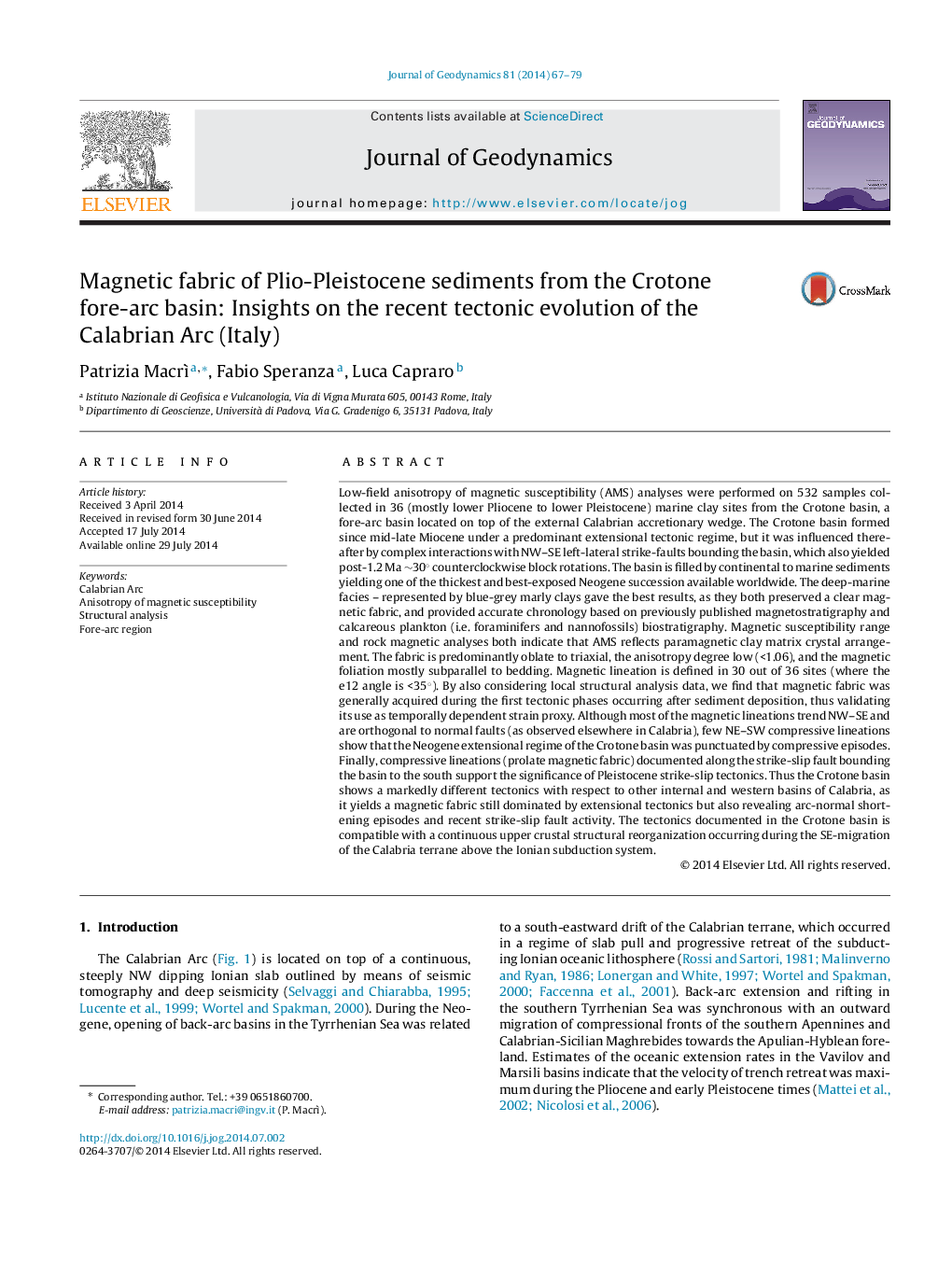| کد مقاله | کد نشریه | سال انتشار | مقاله انگلیسی | نسخه تمام متن |
|---|---|---|---|---|
| 4688052 | 1635768 | 2014 | 13 صفحه PDF | دانلود رایگان |
• We present an integrated structural and AMS investigation of the Plio-Pleistocene sedimentary infill of the Crotone basin (Calabria, south Italy).
• Analysis of deformation patterns and tectonic evolution of the Crotone forearc basin could provide constraints for the geodynamics of the Tyrrhenian Sea-Calabrian Arc domain.
• Study of the magnetic fabric in deformed sedimentary basins proves that AMS analysis can be employed as a strain marker for reconstructing the history of tectonic deformation.
Low-field anisotropy of magnetic susceptibility (AMS) analyses were performed on 532 samples collected in 36 (mostly lower Pliocene to lower Pleistocene) marine clay sites from the Crotone basin, a fore-arc basin located on top of the external Calabrian accretionary wedge. The Crotone basin formed since mid-late Miocene under a predominant extensional tectonic regime, but it was influenced thereafter by complex interactions with NW–SE left-lateral strike-faults bounding the basin, which also yielded post-1.2 Ma ∼30° counterclockwise block rotations. The basin is filled by continental to marine sediments yielding one of the thickest and best-exposed Neogene succession available worldwide. The deep-marine facies – represented by blue-grey marly clays gave the best results, as they both preserved a clear magnetic fabric, and provided accurate chronology based on previously published magnetostratigraphy and calcareous plankton (i.e. foraminifers and nannofossils) biostratigraphy. Magnetic susceptibility range and rock magnetic analyses both indicate that AMS reflects paramagnetic clay matrix crystal arrangement. The fabric is predominantly oblate to triaxial, the anisotropy degree low (<1.06), and the magnetic foliation mostly subparallel to bedding. Magnetic lineation is defined in 30 out of 36 sites (where the e12 angle is <35°). By also considering local structural analysis data, we find that magnetic fabric was generally acquired during the first tectonic phases occurring after sediment deposition, thus validating its use as temporally dependent strain proxy. Although most of the magnetic lineations trend NW–SE and are orthogonal to normal faults (as observed elsewhere in Calabria), few NE–SW compressive lineations show that the Neogene extensional regime of the Crotone basin was punctuated by compressive episodes. Finally, compressive lineations (prolate magnetic fabric) documented along the strike-slip fault bounding the basin to the south support the significance of Pleistocene strike-slip tectonics. Thus the Crotone basin shows a markedly different tectonics with respect to other internal and western basins of Calabria, as it yields a magnetic fabric still dominated by extensional tectonics but also revealing arc-normal shortening episodes and recent strike-slip fault activity. The tectonics documented in the Crotone basin is compatible with a continuous upper crustal structural reorganization occurring during the SE-migration of the Calabria terrane above the Ionian subduction system.
Journal: Journal of Geodynamics - Volume 81, November 2014, Pages 67–79
